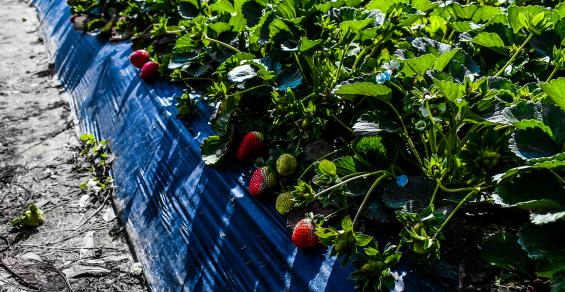Grow strawberries may take a little more attention than other crops.
Strawberries are easy to grow at home, if key components are provided for the plant, according to Michael Polozola, horticulture specialist with the LSU AgCenter.
Strawberries are heavy feeders and Polozola recommends a fertilization program to boost the yield of fruit production. Also, the plants are susceptible to damage from insects, birds, or microbial pathogens from contact with the soil. Rot occurs on the bottom of the fruit at that contact point.
To prevent birds from eating the crops, he recommends bird netting or painting rocks like strawberries in the early season to make birds associate the red color with uneatable food.
“Having the optimal pH, the ideal grow location, and a good pot can greatly help your chances of being successful,” he stated.
The ideal growing location has full sun combined with good airflow. Irrigation may be needed depending on grow method.
“Water the soil, not the plant,” he said. “Watering the leaves invites disease pressure on the plant. We also recommend planting near the edge so the fruit can hang off.”
Bare roots are the most economical and traditional method for starting strawberries.
“Some plants are not available at local hardware stores during planting season. This means you may have to source planting material in another part of the country or buy the best variety available at that time.”
When it comes to establishing newer plants, pinching off the flowers and runners, can help the crown focus on production.
There are many ways of planting strawberries from in-ground to custom-built towers.
“Some of the towers available can hold up to 30 plants in a very small footprint,” he said. “Towers ensure good airflow, good working posture, and help prevent slugs.”
The LSU Ag Center has evaluated multiple varieties of strawberries. The evaluation considered heat tolerance, cold hardiness, disease resistance, pollination, taste and size of the fruit, and overall yield.
“This is an ongoing list and at this time I would like to recommend the top three varieties for home production,” Polozola said. “The number one variety is Mara des Bois, then Eclair, then Seascape.”
Additional information on sourcing plant material, establishing plants, the various substrates, fertilizing requirements, and available equipment can be found at www.LSUAgCenter.com.




